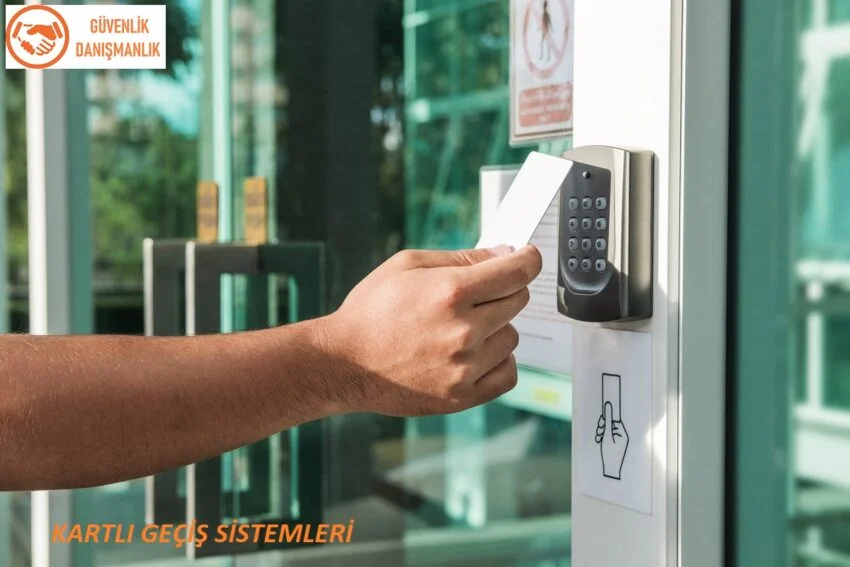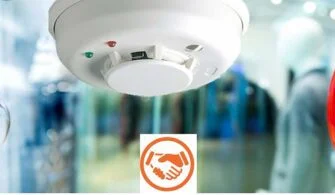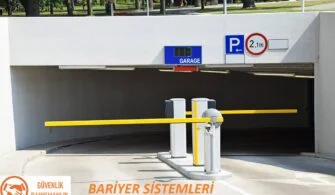Like the other security systems we have discussed, the card access system is not a structure consisting of a single component or device. On the contrary, it is a collection of various software, PC, hardware equipment that are interconnected. On the software side of the card access system, there is a PC software where transitions can be tracked and various reports can be obtained, and a PC (server) where this software is installed. In the field, there are many equipment such as card access panels, card readers, electric and magnetic locks, turnstile and barrier systems, etc. Now let’s try to define these equipment one by one.
Card Access System Software and Server.
The control and management system of the card access system is formed by the software (program) and server. All management, control, and reporting of the entire system is done from this platform. Tasks such as assigning entrance/exit proximity or Mifare cards to the relevant personnel, defining access permissions for each card, and live monitoring of entrances and exits by the security department are all carried out through this program. Additionally, various retrospective reporting operations can be performed through the program. For example, reports on how many people passed through Door A within a week, who these people were, and the date and time they passed through this door can be generated. Reports on the people who left after a certain period of time, unauthorized entrance attempts, and dozens of other entrance and exit reports can also be easily obtained through this program.
In addition, various tracking system software such as PACS software, canteen monitoring software, and visitor tracking software can be integrated with the card access system software. Nowadays, card access system software can also be integrated with CCTV camera systems, enabling camera footage to be monitored through the card access system software. The card access system software should be installed on a powerful server (PC) to ensure the system operates smoothly.
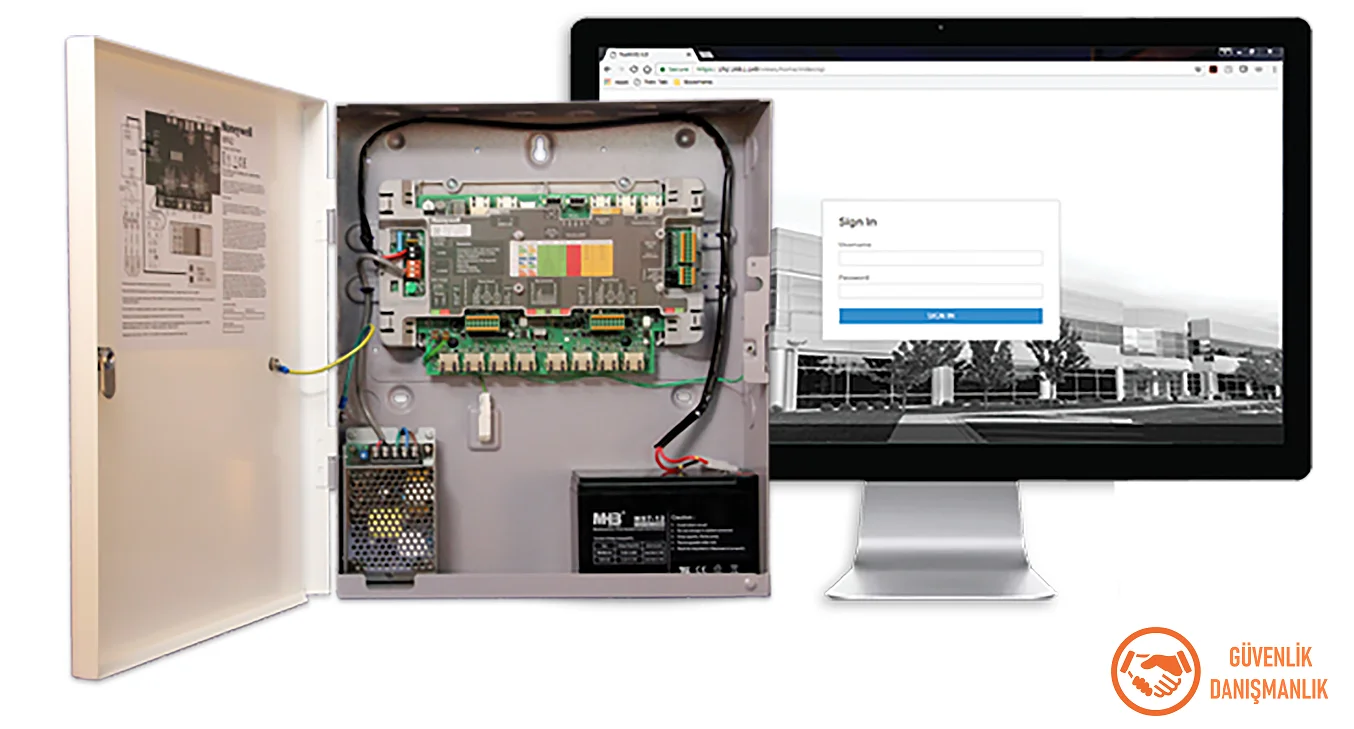
Card access control system software and card access control system panel
Card Access System Panels:
The control mechanism of the access control system is a structure located at the brain of the system. Software changes made in the access control system software are loaded onto the access control panel. All equipment such as card readers, biometric readers, electric and magnetic locks, turnstiles, barriers, etc. are connected to the access control panel and controlled by this panel.
Access control panels are generally divided according to the number of readers (card readers). For example, they are referred to as single reader panel, two reader panel, four reader panel, eight or sixteen reader panel, etc. The access control panel consists of an electronic card that connects the field equipment of the system and a power supply that feeds the electronic card and the system, as well as a metal panel that carries the battery. Cables from almost all field equipment are pulled into the access control panel. Nowadays, access control panels can be networked with each other to create complex systems consisting of dozens of panels.
Card Readers:
As can be understood from the name, card readers are special readers that read cards in the access control system and communicate with the access control panel to notify the panel of authorized cards to allow door opening. They are generally known as readers in the market. There are also several different models of card readers. The first one is proximity card readers, and the other is Mifare readers.
 Proximity readers only read proximity cards and allow access to authorized cards by communicating with the card access control panel. They are commonly known as proximity card readers. On the other hand, Mifare readers read Mifare cards, which can work like proximity cards to identify and grant access to authorized cards. Additionally, Mifare card readers can also read the information stored in the cards, which have the ability to store data. Thus, Mifare card readers are used not only for access control but also for different payment systems with various applications.
Proximity readers only read proximity cards and allow access to authorized cards by communicating with the card access control panel. They are commonly known as proximity card readers. On the other hand, Mifare readers read Mifare cards, which can work like proximity cards to identify and grant access to authorized cards. Additionally, Mifare card readers can also read the information stored in the cards, which have the ability to store data. Thus, Mifare card readers are used not only for access control but also for different payment systems with various applications.
Biyometric readers:
Biyometric readers are devices that read the biological specialities of humans instead of proximity or mifare card readers. The use of these readers is quite common today, and it is predicted that they will develop even more in the future. The detection logic of these readers is based on special devices that analyze certain biological differences unique to each person, allowing them to identify individuals based on this analysis.
There are different types of biometric recognition systems available today. Fingerprints recognition systems identify individuals by recognizing their fingerprints and granting them access based on their fingerprints. Similarly, face recognition systems analyze people’s faces and grant access based on their differences. Biometric systems that identify individuals based on the location of their veins or palms, and systems that recognize the iris and retina in the eyes, are also widely available and commonly used.
In recent years, the prices of fingerprint recognition systems have become quite affordable, making them particularly popular in personnel attendance control systems in our country. While fingerprint recognition system readers can be purchased in our country for 300-500 USD, an iris reader or vein reader can cost up to 5000 USD. When creating a project, it is important to think about the purpose of the biometric system and select an appropriate biometric system accordingly.
Electric locks and magnetic locks:
Electric and magnetic locks are important parts of card access systems. These locks are locking mechanisms that use electric power to be controlled by the card access system panel and allow authorized individuals to pass through the doors where they are mounted. They perform the same function as the standard door locks we know, but with the use of electric power in place of keys.
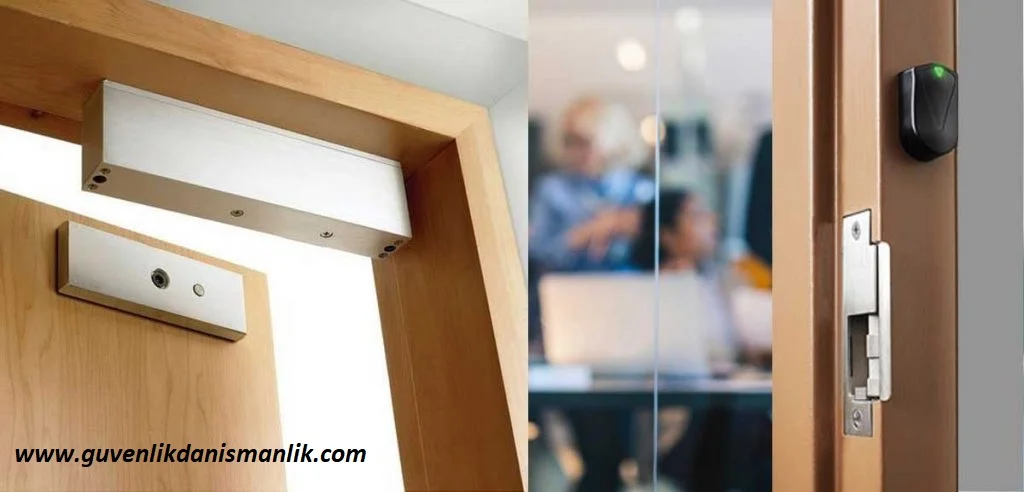
Card Access System Electric and Magnetic Locks
Electric Locks:
Electric locks are lock mechanisms that are installed in a suitable manner into the door frame. They are always mounted on the door frame and are not visible from the outside, ensuring that the aesthetics of the door are not affected. There are different types and strengths of electric locks available for wooden doors, aluminum doors, and metal doors. The appropriate type of lock should always be selected for each door.
Electric locks come in two different types, namely Fail Secure (locked when power is off) and Fail Safe (locked when power is on), and they are used in different places and for different purposes. For example, if we want to prevent entry and exit from a certain point when the power is cut off, we need to use the Fail Secure model. However, if it is not suitable for people to be trapped inside when the power is cut off, we need to use the Fail Safe model.
Magnetic Locks:
Magnetic locks are a type of lock consisting of two main parts, which are mounted on the top and frame of the doors. They are generally sold according to their holding forces, such as 250kg magnetic lock, 500kg magnetic lock, etc. There are different types of locks with various holding strengths. Although these locks consist of two different parts, which are magnetic holder and its counterpart plate, sometimes additional mounting parts may be needed depending on the condition of the door. These parts come in three different shapes: L bracket, Z bracket, or L&Z bracket.
Door Holders:
They work on a similar principle to magnetic locks, but unlike magnetic locks, door holders prevent the door from closing and keep it constantly open. These applications are usually used in fire doors. Under normal conditions, it is desired that fire doors remain open for people to pass through, but during a fire, the door is automatically closed, and door holders come into play to ensure this. Pictures of door holders are available on the next page.
There are also locks with monitoring contacts on both magnetic and electric locks. This allows for the determination of whether the door is open or closed in card access systems, and alarms can be generated for doors that remain open, preventing any security vulnerabilities.
Buttons are devices commonly used to open doors or similar areas. In general applications, entry to an area is usually done using a card reader or biometric scanner, while exit is typically done using an exit button (Rex button).
As mentioned above, entry to a room is done using a card reader, but at exit points where no reader is present, an exit button is used. There are many different types and designs of Rex buttons in use today, but their basic function is the same.
Also known as an emergency exit button, this is used in areas where human safety is important, and is present at every door regardless of whether it has a reader or a button for exit. As the name suggests, it is a special button that can be used in emergency situations such as fire or gas leaks, allowing people to quickly exit a building by keeping the door open.
Mifare Card:
Mifare cards are similar in shape to proximity cards and have a reading range of 6-10 cm, just like proximity cards. The feature that sets Mifare cards apart from proximity cards is that they can be used for both ID tracking and data storage for various purposes. They typically have data storage capabilities of 1Kb or 2Kb. They are commonly used in contactless access control systems, smart ticket applications, and payment systems. The working frequency of Mifare cards is 13.56 MHz.


